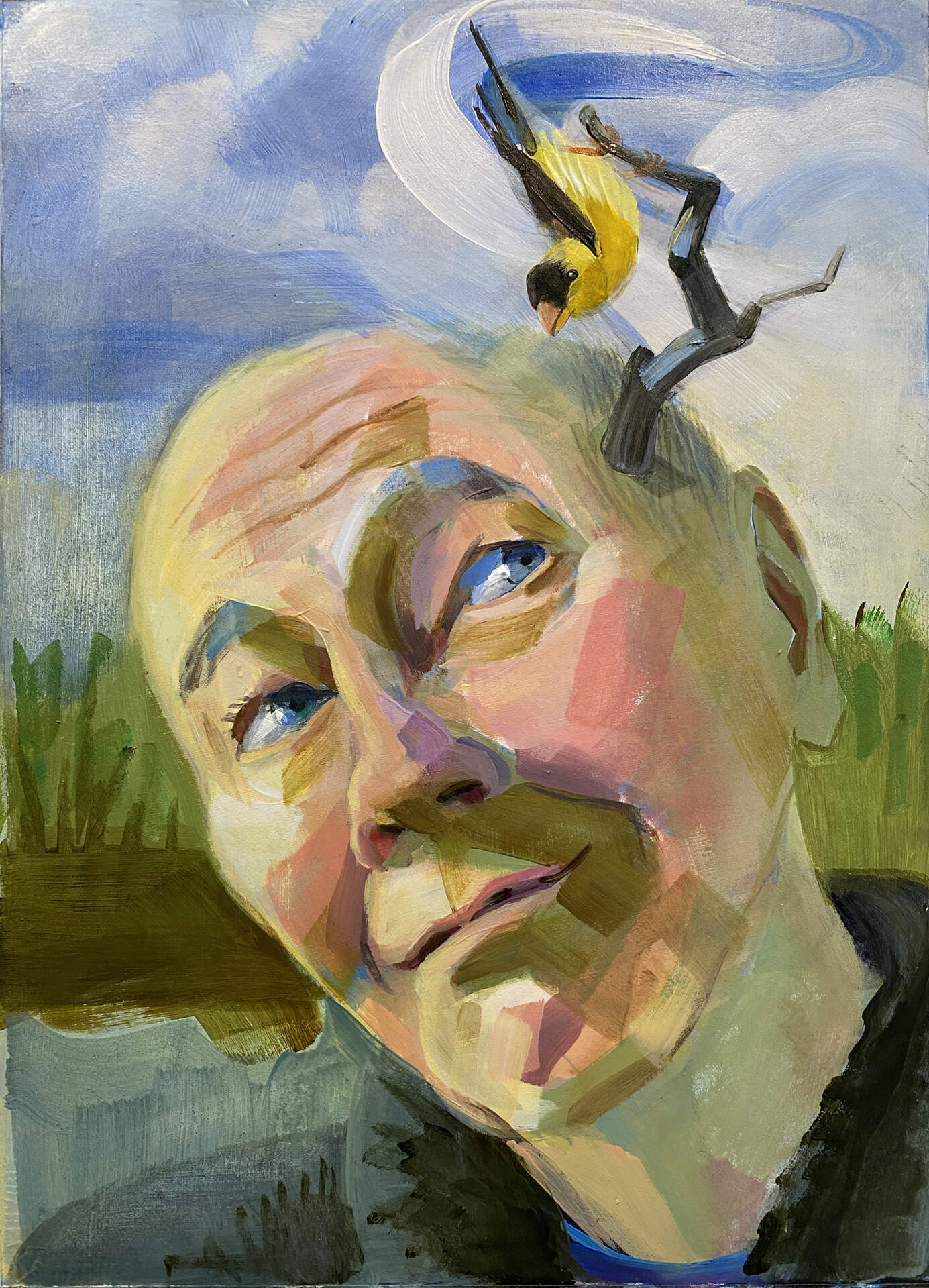Mike Glier (b. 1953)What the goldfinch said (Self-Portrait)
2021
acrylic on Arches paper
15” x 11 ½”
Courtesy of Downing Yudain, North Stamford, CT
INTERGENERATIONAL
MG: Burchfield looks like a dapper, young man in his self-portrait. He is serious and clean-cut but with flare. The tie says it all; it contrasts with his mustard shirt; it is tightly knotted but floppy and it is covered with polka dots! Nancy, what was he doing at this stage of his life?
NW: He was gaining confidence in becoming an artist, about to embark on the final semester of his senior year at the Cleveland School of Art. I wonder if he thought of his tie as being a wearable equivalent of a moth. He loved cecropia moths for the crescent moon patterns on their wings. He observed all kinds of insects and spiders, admiring the camouflage patterns on moth and butterfly wings, bulging cicada eyes, ratcheting cricket legs, and so much more. Beyond that, he created what I call “audio-cryptograms” for the distinctive sounds they make. In his paintings, we can hear them even if we cannot see them.
MG: I taught a remote, painting class in 2021, and I made a demonstration video about portrait painting, and this is the result. It was a dreary time of isolation for many, so I wanted to make something cheerful, but I also wanted to signal to the students that portraiture need not be dull. Goldfinches are common at my house, particularly around the feeder in the winter where they argue with flutter and twitter. The perch coming out of my head is uncomfortable, like growing an antler, but it serves as a support and a connection to the bird and its vitality.
NW: Goldfinches are among Burchfield’s and my personal favorites. The male’s brilliant yellow and black coloration reflects sunlight in their looping, chirping flights from tree to tree. I just visited friends who live by a grove of trees next to an open field and was stunned by the size of the goldfinch flock flitting from tree to tree, wildflower to wildflower. I find it fascinating that their colors fade to olive green, like the female’s color, during autumn and winter months. But pairing your portrait with Burchfield’s brings up more than a common love of birds. When we first began discussing an exhibition you could have opted for a solo show, but you preferred to exhibit alongside Burchfield. Why?
MG: Artists are never alone in their studios; other artists from the past and present are always there in conversation, commenting, and even guiding the action. Burchfield has been a mentor for me, admittedly a ghost of a mentor, but present and alive in my imagination. In the 20th century when the Avant-Garde was at play, it was important for artists to rupture with the past and make things that seemed radically new. This approach was necessary, since artists were shaking out the attitudes that brought so many wars into being. But we are in a different place now, one with dangerous social divisions and partisanship, and the response from artists needs to be one of inclusion rather than rupture. In this spirit, it’s a good idea to acknowledge the people from whom you have learned and celebrate the passing of knowledge from one generation to another. Participating in an intergenerational show with Burchfield is not only a great honor, but also a celebration of cultural continuity.
NW: I think of your work as being an empathetic conversation with Burchfield. You get him. You understand the role of the artist to bring ideas to others. To teach, yes, but also to celebrate what gives meaning to you. This dance of words around pairs of paintings would surely have delighted Burchfield, though the modest man would probably blush with the attention.
